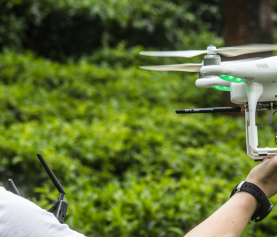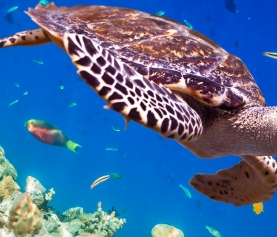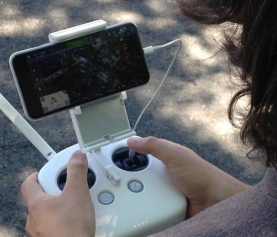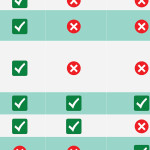4 Essential Features of Drones Flying Over Water
Despite the appearance of being simple, flying drones can be a challenge, especially when they seem to develop a mind of their own (as we’ve learned from personal experience). Drone malfunctions become a more menacing threat when flying over water.
Eric Cheng of Make magazine compiled a list of unintentional water submersions, and after four quadcopter drownings he attached buoys to his drone. Luckily, he wrote that piece over a year ago, and since then, drones have advanced to the point of having decent water capabilities.
While we could provide you with a list of the top water compatible drones on the market, we thought it might be more helpful to list the most important features you’ll need if you intend to fly your drone over water:
Waterproof – Some drones completely encase all the electrical parts, including the camera. Others, you have to provide the waterproof casing for the camera, specifically in the case that you’re shooting with a gimbal and GoPro. Still others, like The Splash Drone, are made with waterproof wires and circuits.
Landing Gear – Can it take off and land in water? If you generally start shooting from land, you probably don’t need to worry about having water landing gear, but if you find yourself taking off from a boat frequently, having the ability to take off straight from water might be a helpful feature for you.
Underwater Footage – If you want to capture underwater footage, you need to consider where the camera sits on the drone. Some drones sit above water, while others are able to go a little below the surface and capture underwater activity. These options generally involve a gimbal and GoPro, so when the drone is floating on the water the GoPro is suspended underneath the water line.
Surface Footage – Some people need to shoot the water’s surface. Just as some drones hang the camera slightly below the water, other drones land with the camera just above the surface. The trick is finding a drone that will capture the surface while moving around to get every angle you need. Parrot recently released a drone that acts much like a speed boat, using an attached mini drone to propel itself around the water’s surface.
Inclement Weather Capabilities – If you’re filming around large bodies of water, storms are a reality you have to deal with frequently. Storms can also provide some of the most interesting and exciting footage, so it’s tempting to send a drone out in the middle of a storm. Usually that ends in disaster, but there’s at least one drone on the market claiming to be able to navigate rain. If you want to be the next storm chaser, the QuadH2O is your new best friend.
At the end of the day, no matter what kind of drone you have, use common sense when flying to keep your drone out of harm’s way. If you do, you’ll have great videos that you can then send to friends, family, colleagues, and clients using Wispeo.
Wispeo is now mobile! Get the easiest way to share videos and photos from your phone in the App Store or from Google Play.






